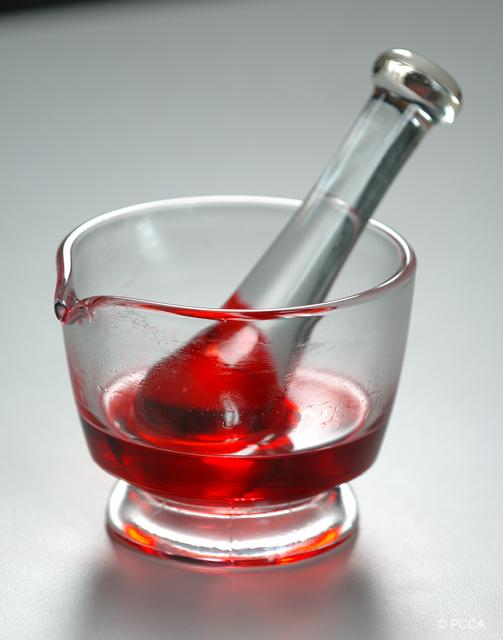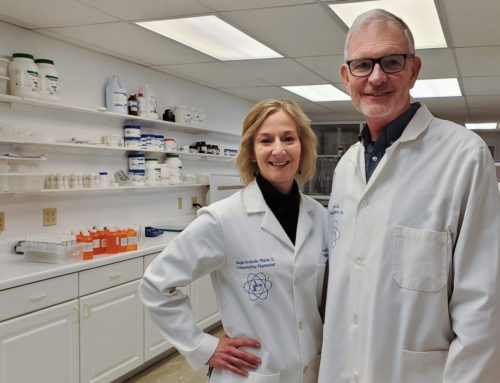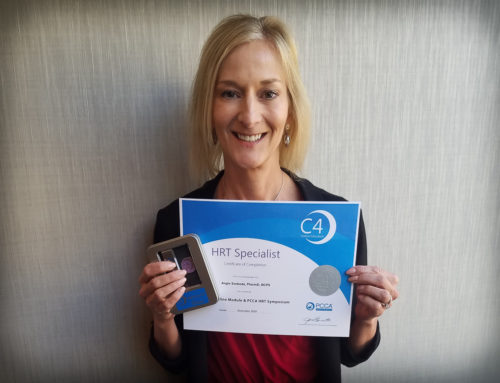|
Low-Dose Naltrexone (LDN) in the Management of Chronic Pain and Inflammation of Multiple Sclerosis, Fibromyalgia, Crohn’s Disease, and Other Chronic Pain Disorders
Fibromyalgia is not considered a classic inflammatory disease, but rather a disorder of the central nervous system that has a neuroimmune component. The effect of LDN as an immune-modulator may be beneficial for treating fibromyalgia, and pilot studies have started to evaluate its impact. One single-blind crossover study looked at the serum cytokine levels of eight women over the course of 10 weeks. After 8 weeks of LDN therapy, a variety of proinflammatory markers were reduced, especially those associated with nociception and allodynia. The participants reported significantly less pain and symptoms associated with their fibromyalgia, and no moderate or major adverse effects were reported. A recent pilot study found LDN produced a significant improvement in daily pain, stress, and fatigue associated with fibromyalgia. The study only included 12 participants, who all followed the same treatment schedule. Severity of symptoms was tracked using a visual analog scale, and the patients also underwent mechanical, thermal, and cold pain assessments every 2 weeks. A notable effect of LDN in fibromyalgia has been increased pain tolerance. One case report involved a patient with fibromyalgia on a daily LDN dose of 6 mg undergoing a cold pressor test (CPT) to determine pain tolerance every few weeks along with self-reporting the patient’s quality of life and general pain. After 18 weeks of LDN therapy, the patient’s CPT time increased 10-fold. An additional small double-blinded crossover study of 31 participants showed a significant reduction in daily pain as compared to placebo and baseline pain. The participants reported not only reduction in daily pain but also significantly increased quality of life and mood. The use of LDN as a potential anticancer agent has been researched for some time. The mechanism is presumed to be due to inhibition of cellular proliferation that occurs with intermittent blockade of OGFr. |
|
|
|
The Long-Term Survival of a Patient with Stage IV Renal Cell Carcinoma Following an Integrative Treatment Approach
Kidney cancer is among the 10 most common cancers in both men and women. The lifetime risk for developing kidney cancer, which is higher in men than in women, is about 1 in 63 and is rising. In a case report, Berkson and Calvo of Oklahoma State University and The Integrative Medical Center of New Mexico described the treatment of a 64-year-old male who was diagnosed with metastatic renal cell carcinoma (RCC) in June 2008. Following a left nephrectomy and the standard oncological protocols, he became leukopenic and thrombocytopenic and could not tolerate any further conventional treatment. The size of the solitary lung metastasis increased from 1 cm to 8-9 cm on a CT scan, and he was informed that given his diagnosis and poor response to conventional therapy, any further treatment would be palliative. He arrived at The Integrative Medical Center of New Mexico in August 2010 as a last resort. He was weak, cachectic, physically and emotionally exhausted, and was experiencing almost constant shortness of breath, flank and abdominal pain, and nausea. An integrative program was prescribed, and a healthy life style program was initiated. The purpose of the program was nutritional support, comfort, immune stimulation, and metabolic alteration of the malignant process. The hope was that his disease progression could be slowed and that his life could be prolonged. It was strongly recommended that the patient continue with a board-certified oncologist but he refused because he had been told by his oncologist that he failed conventional treatment regimens. The key therapeutic agents initially prescribed were intravenous (IV) vitamin C 25 to 50 gm every morning and IV racemic a-lipoic acid (ALA) 300 to 600 mg every afternoon after a meal (to prevent hypoglycemia). These therapies were administered at the clinic on an outpatient basis. The oral protocol included low-dose naltrexone (LDN) 4.5 mg at bedtime, the oral Triple Antioxidant Therapy protocol with racemic ALA 300 mg twice daily, selenomethionine 200 µg (micrograms) twice daily, and silymarin 900 mg twice a day along with professional-strength B-50 complex daily. Oral hydroxycitrate (HCA) 500 mg 3 times daily was added to the protocol in September 2013. It was also suggested that the patient follow the IMCNM lifestyle program including a strict diet with 4 servings of fresh vegetables a day, very low simple carbohydrate intake, and no processed food, especially preserved animal products. Some organic animal protein was allowed. In addition, an exercise and a stress reducing program were prescribed. The patient continued to visit the IMCNM every 3 months for a week or two of intensive daily IV vitamin C and IV ALA therapy. In January of 2011, he stated that he was beginning to feel healthy again. At that time, he had an 8-pound weight increase since beginning treatment. The patient continued to go to work throughout the course of his treatment. In January 2011, a repeat PET/CT scan was performed. Again, the mass in the left lung was demonstrated, with no apparent change in size. In June 2011, another PET/CT scan showed that the upper lung mass was much smaller in size (7.2-4.4 cm). A repeat PET/CT scan in March 2012 showed complete resolution of the upper lung mass. Subsequent PET/CT scans in September 2013, January 2014, and August 2014 continued to demonstrate absence of the left lung mass. The right kidney contrast in all PET/CT scans was considered by the radiologist to be normal physiologic contrast elimination (left nephrectomy was performed in 2008). A CT scan of June 2015 showed no mass in the left lung. As of September 2017, the patient continued on his integrative protocol without changes to his regimen and was alive and in good health. From August 2010 until November 2017, “the patient’s RCC with metastasis to the left lung was followed closely using CT and PET/CT imaging. After only a few treatments of IV ALA and IV vitamin C, his symptoms began to improve, and the patient actually regained his original baseline weight, his energy and outlook improved, his dyspnea resolved, and even returned to work.” His most recent PET/CT scan (prior to publication of the case report) demonstrated normal glucose uptake in his left lung. Nine years following diagnosis, after treatment with a gentle integrative program which was essentially free of side effects in his case, the patient had stable disease with an elimination of the signs and symptoms of stage IV RCC. “However, from the authors’ experience, when the treatment protocol is halted, in many cases, the cancer growth resumes. Thus, the ALA/N (a-lipoic acid/low-dose naltrexone) protocol appears to induce tumor reduction/dormancy rather than cure the disease process. Further multicenter studies are warranted to assess the success of this treatment regimen and long-term results on a wider population.” Integr Cancer Ther. 2017 Dec 1 (journals.sagepub.com/doi/10.1177/1534735417747984) |




